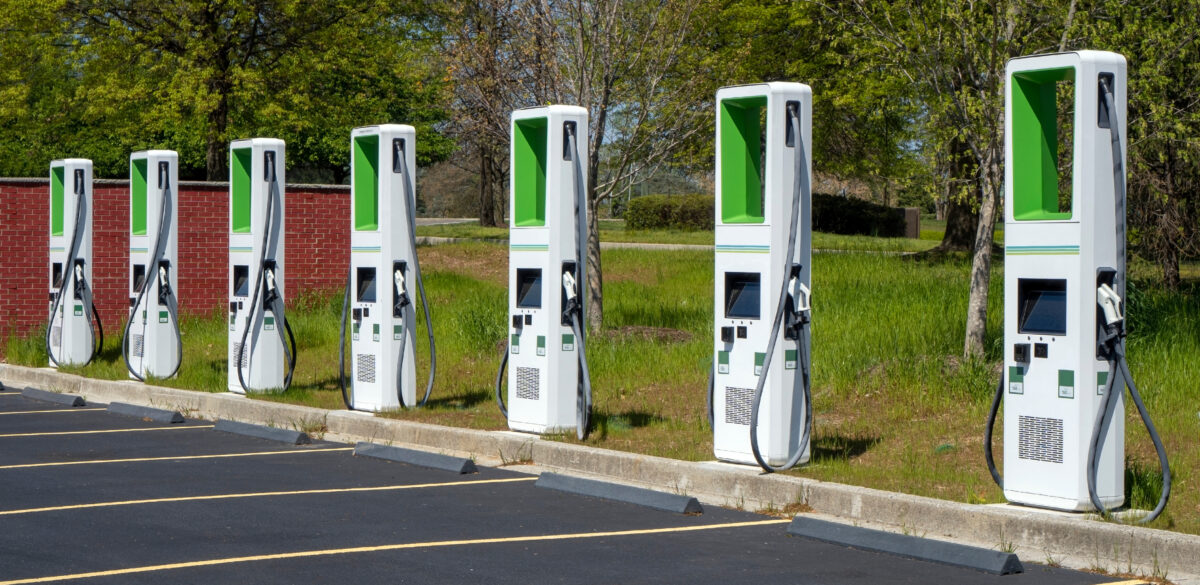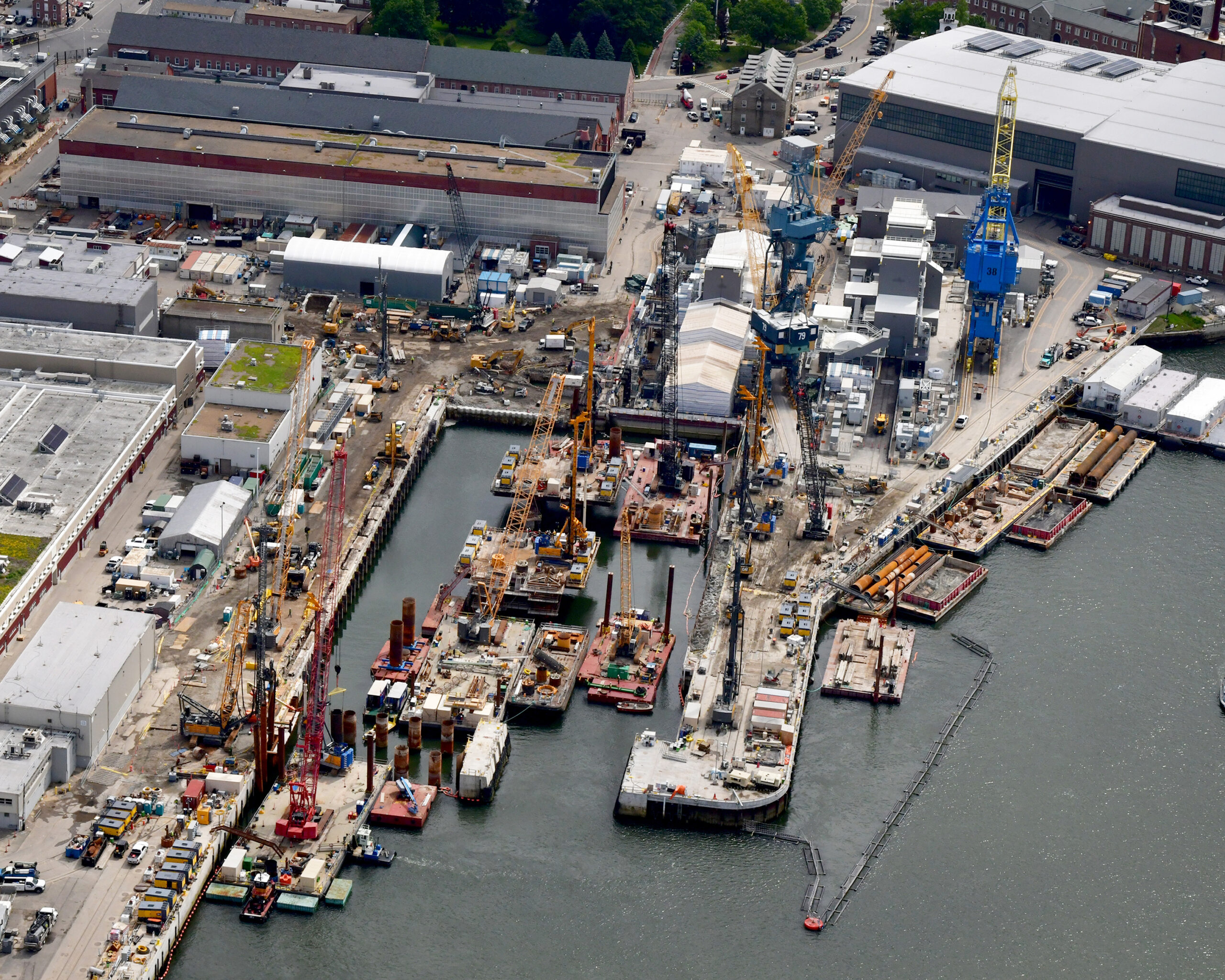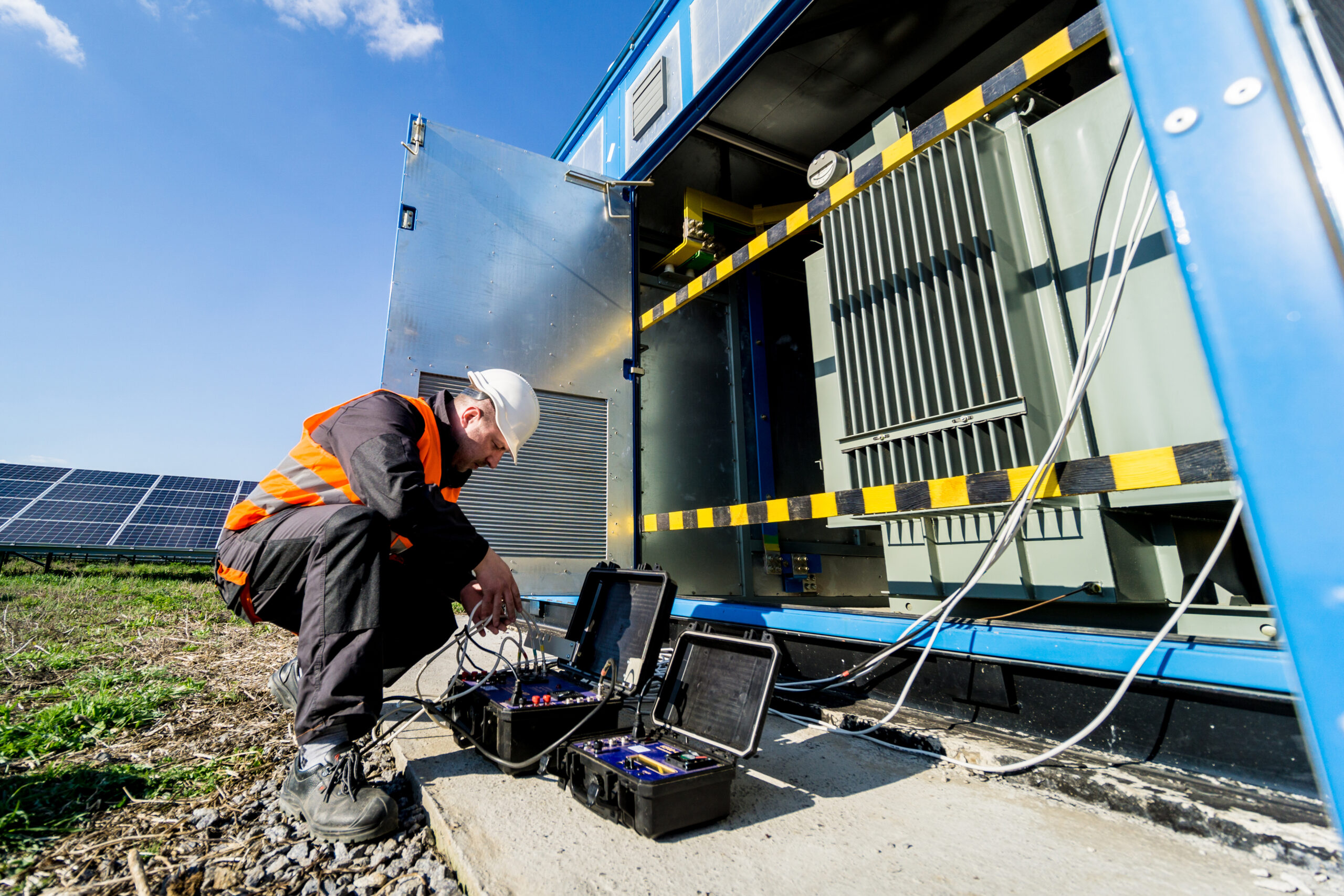Charging Forward: How Clark Nexsen is Supporting the U.S. Government to Prepare for an Electric Future
 With an increasing amount of electric power vehicles and equipment entering the market, electric infrastructure has become a priority nationwide. In the following, Clark Nexsen energy market leader Stephen P. Wilson highlights how the firm is preparing federal government agencies and locations for an electric future.
With an increasing amount of electric power vehicles and equipment entering the market, electric infrastructure has become a priority nationwide. In the following, Clark Nexsen energy market leader Stephen P. Wilson highlights how the firm is preparing federal government agencies and locations for an electric future.
On December 8, 2021, President Biden signed Executive Order 14057: Catalyzing Clean Energy Industries and Jobs Through Federal Sustainability. The goal? To have the Federal government “lead by example in order to achieve a carbon pollution-free electricity sector by 2035 and net-zero emissions economy-wide by no later than 2050.” To achieve net-zero emissions, the government has mandated that all federal agency vehicle acquisitions be electric for light-duty vehicles by 2027 and medium and heavy-duty vehicles by 2035. Additionally, all agency buildings, campuses, and installations must achieve net-zero emissions by 2045 and reduce greenhouse gas emissions by 50 percent by 2032. With that electrification mandate comes a nationwide challenge: designing and building the infrastructure for federal agencies to support a fast-arriving electric future.
Outlining the Future
Clark Nexsen has been tasked with developing a Unified Facilities Criteria (UFC) document, which will outline the design and planning requirements of electric vehicle charging facilities for the federal government. The first ever UFC dedicated for the design of electric vehicle charging facilities (EVCFs), the document will be posted on the Whole Building Design Guide by the National Institute of Building Standards (NIBS) website for public use. Firms, corporations, architects, and designers worldwide will use this document when doing EVCF designs for the U.S. Department of Defense.

Naval Station Norfolk is one of the 12 sites on the East Coast and Southeast region that Clark Nexsen has assessed for the development of EVCFs.
Assessing Facilities
In addition to writing the UFC document, Clark Nexsen is actively implementing and executing these design processes in the field. Another of our key task orders is to perform and complete site assessments for electric vehicle charging at multiple Navy and Marine Corps installations. Clark Nexsen is a joint venture partner with Jacobs Engineering on this endeavor, and the team is assessing 30 sites in total. An average of three charging sites per installation is being developed with each site assessment, resulting in an initial schematic design and budgetary construction cost estimate. Our expert design team collaborates with project stakeholders at each installation to identify the best and highest priority locations for potential charging facility development. We perform engineering assessments of the sites and rank them based on the technical assessment. We then collaborate with the installation stakeholders to select those to be further developed to a schematic design level. Schematic designs and programming documentation for potential construction projects are then developed, thereby creating a project list and project pipeline for the buildout of EVCFs at the installations’ charging infrastructure. So far, Clark Nexsen has visited 12 Navy and Marine Corps sites on the East Coast and Southeast region, including Marine Corps Base Quantico, Marine Corps Air Station Cherry Point, and our local Hampton Roads military base, Naval Station Norfolk.
Modernizing Shipyard Infrastructure
Clark Nexsen is also working with Jacobs on another task order as part of the Navy’s Shipyard Infrastructure Optimization Program (SIOP). The program is a massive investment to reconfigure, modernize, and optimize the Navy’s four public shipyards – Norfolk Naval Shipyard, Portsmouth Naval Shipyard, Puget Sound Naval Shipyard, and Pearl Harbor Naval Shipyard – so they can maintain the Navy’s modern fleet of submarines, aircraft carriers, and other ships.
We’ve been tasked to perform a feasibility study on the electrification of all four shipyards’ cranes. The study requires a review and evaluation of the existing crane inventory at each shipyard. Through collaboration with the shipyard and other Navy stakeholders the project team will develop recommended courses of action to optimize a transition to more efficient electric cranes. While some cranes are running on fossil fuels, some are already electrified. However, that doesn’t mean it’s a suitable piece of equipment. For example, a bridge crane could be completely electrified. However, if it’s 30 or 40 years old, parts will be more expensive, won’t be as efficient, and will use more electricity compared to state-of-the-art models.

Portsmouth Naval Shipyard, Kittery, Maine: June 07, 2023: Aerial of Dry Dock #1 construction zone. (U.S. Navy photo by Jim Cleveland/Released)
A critical piece of the shipyard crane electrification feasibility study includes a thorough assessment of each shipyard’s electrical distribution infrastructure to determine if and how it can support the required electric load and demand of electric cranes. Since more cranes will be electrified, an increased electrical load will require more energy. Our assessment asks the question: what are the impacts and effects of electrification, especially on the shipyard distribution system? The outcome of our assessment and development of a preferred course of action will supply the Navy with a foundational answer and guidance forward in response to this question.
Project Planning for Electrification
The most important aspect of upgrading or building new electric infrastructure for EV charging is the project planning process, which cannot be underestimated. It is vital to plan accordingly and have a deep understanding of timing for things such as equipment and vehicle availability from the industry. Early identification and engagement of all potential stakeholders, such as facility building managers, utility maintenance staff, planners, asset managers, and public works personnel, is critical and will positively impact the entire process. Identifying stakeholders who will procure, own, operate, and maintain the equipment is necessary. Early engagement and partnering with the local utility is vital so it can share its existing system capacity and begin assessing its service and infrastructure to assist with early project development-decision making. Each of these elements of planning and communication will help establish an execution strategy for a successful electrification project, especially once there is a basic and common understanding of what the new load and demand will be on the grid by all project stakeholders.

It is important to engage with all potential stakeholders and identify equipment needs during the project planning process.
Another critical element of project planning is having a clear understanding of the availability and lead times of electrical distribution equipment. If a project needs to purchase new electrical switchgear, transformers, and/or other infrastructure materials, the lead times for procurement and delivery of such equipment can and will impact the project planning and execution schedule. Recent experience shows that one can expect the lead times for electrical distribution equipment to be months or years. Equally important is understanding EV charging control systems for the charging equipment that will be used. An EV charging control system can support prioritization of power. So, if the existing power supply is limited, one must determine whether the building power requirements or EV charging equipment requirements take precedence depending upon the mission supported by both.
A future with electrified infrastructure has long been predicted. With consumer, commercial, and industry innovations like faster charging and more affordable electric vehicles, that future has now been turbocharged. Clark Nexsen and our partners are excited to work on the front lines to make that electrified future happen. From bolstering our nation’s defense capabilities with newer, more efficient cranes at our naval shipyards to helping our federal government clients prepare for the influx of electric vehicles it will purchase over the next decade, Clark Nexsen is just getting started on preparing for the electric future.
Stephen P. Wilson, PE, CEM, LEED AP, is the Energy Market Leader for Clark Nexsen. He has over 30 years of experience in energy analysis, studies, and energy project designs to support clients in assessing how to manage energy resources and costs. To speak with Steve, please contact him at swilson@clarknexsen.com or 757.455.5800.
